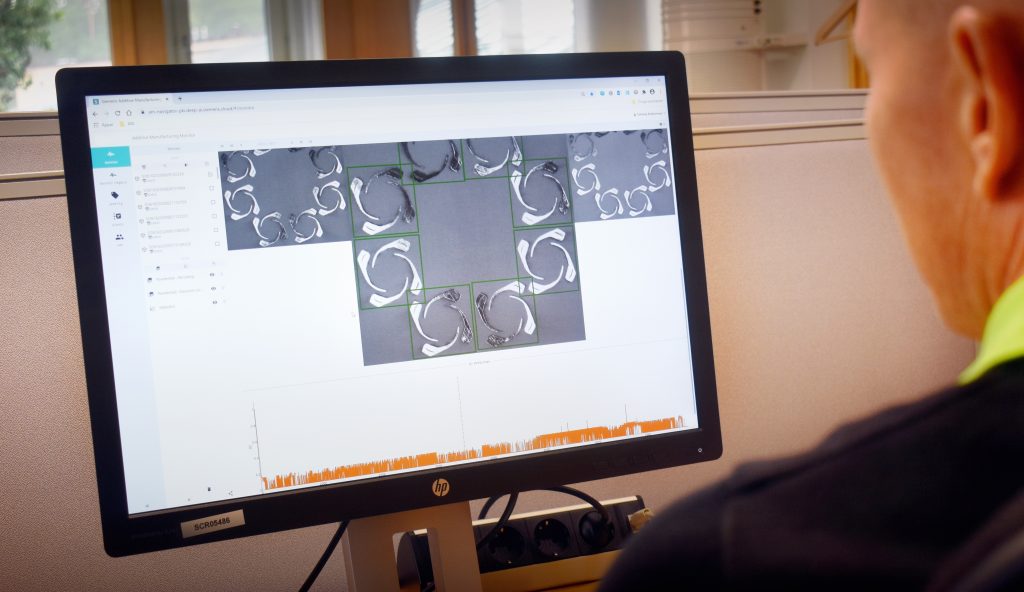Industrial manufacturing firm Siemens Energy, and global certification and risk management firm DNV, have joined forces to create a new industrial 3D printing quality assurance platform.
This new platform combines Siemens’ first generation of AM Cockpit, an automated quality control platform for metal additive manufacturing, with DNV’s Independent Quality Monitor (IQM) quality assurance customer portal.
It is claimed that this new combined offering provides reliable quality assurance throughout the entire additive manufacturing process. 3D printed parts can be easily compared to approved master prints, whilst automated and remote process certification is also achievable.
By industrializing this new quality assurance platform, DNV hopes to become the preferred choice for digital risk management within the global energy sector.
“Succeeding in AM industrialization relies on a successful digital transition. The combination of the AM Cockpit and the IQM is a significant step forward for additive manufacturing,” commented Klas Bendrik, DNV’s Chief Digital and Development Officer.
Manish Kumar, Head of business development, strategy and sales at Siemens, added that, “With decades of experience in industrializing additive manufacturing, Siemens Energy is an excellent partner for DNV in advancing quality assurance of additively manufactured parts.”

Successfully combining two platforms
The new Siemens AM Cockpit platform offers detailed data collection throughout the powder bed fusion manufacturing process. Sensor data streams and powder bed images are collected throughout production, with AM Cockpit then generating a digital summary of each 3D printed part. Here, any problematic areas of a 3D print are highlighted for the user.
NDV’s IQM, developed in parallel to AM Cockpit, was produced as part of InterQ, an EU-project aimed at achieving zero-defect manufacturing. This platform uses newly developed algorithms and compliance logic to continuously monitor and validate data quality.
By combining these two offerings into a singular digital platform, users can monitor and visualize the printing process, simultaneously receiving digitized quality assurance. This combination is said to increase confidence in final 3D printed parts, and provide assurance that the 3D printing process meets necessary quality standards.
This new platform has also been highlighted as offering potential when it comes to energy transitions, and supporting decarbonisation. Indeed, Siemens is a key global player in this field, designing and 3D printing gas turbine components which are said to enable increased power plant efficiency and reduce carbon emissions. “Thanks to its design freedom, AM is the core technology that allows Siemens Energy to develop and modify gas turbines to run on green fuels, such as hydrogen,” claims Hans Holmström, CEO of Siemens Energy in Sweden.

Quality assurance and additive manufacturing
Siemens and DNV’s joint platform is the latest in a long line of quality assurance offerings within the additive space.
Last year’s Formnext trade show saw MakerVerse and ZEISS announce new quality assurance capabilities on the MakerVerse platform, with the addition of ZEISS’s exclusive metrology technology. Quality assurance features offered by ZEISS include Tactile CMM, Optical 3D Scan, Industrial CT- and X-Ray Solutions, and Surface Roughness measurement tool. At the time, MakerVerse CEO Dr. Markus Seibold outlined how this partnership “is the perfect solution for our customers needing industrial-grade quality inspections and reports for their AM parts.”
More recently, in March of this year, 3D printing software and services provider Materialise launched its Process Control Software for metal 3D printing and the Build Processor Software Development Kit (BP SDK). The Process Control platform offers automated analysis and correlation of layer data from the 3D printing process. This allows users to identify potential issues prior to post-processing and quality inspection, which can otherwise add 30% to 70% to part production costs. What’s more, the BP SDK allows users to modify build settings. This enables greater control over print job speed, and attributes such as surface quality and density.
Subscribe to the 3D Printing Industry newsletter to ensure you keep up with the latest 3D printing news. You can also follow us on Twitter, like our Facebook page, and subscribe to the 3D Printing Industry Youtube channel to access more exclusive content.
Are you interested in working in the additive manufacturing industry? Visit 3D Printing Jobs to view a selection of available roles and kickstart your career.

